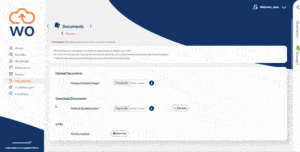Having a fast, simple and effective way to bring new hires into an organisation provides some major benefits.
It helps an organisation to compete for the best talent while reducing the significant financial costs and compliance risks of a slow, outdated and error-prone hiring process.
Despite this, onboarding remains an area of administration where inefficiency is commonplace. It often takes weeks or months to complete the process with candidate dropouts a constant drain on resources.
Here’s a look at the problems and some ways to tackle them:
Why is there a problem with onboarding inefficiency?
The basic cause of inefficiency is a reliance on outdated manual and paper-based processes. Typically, there will be no one system that’s used to handle all the onboarding tasks required to convert a successful job candidate into a productive employee.
Instead, it’s done by a range of different tools and communication methods, including:
- Printed documents
- Posted paperwork
- Emails/attachments
- Spreadsheets
- Phone calls
- Texts
Generally, having information in multiple formats creates inefficiency. To process and share the data, it relies on HR having to manually key-in large amounts of information, causing inevitable errors and duplication.
A manual process also makes effective management difficult to achieve. Trying to keep tabs on the task status for each candidate when information is so fragmented creates a constant logistical headache.
Added to this is the cost and delays caused by physical paperwork with contractual documents having to be printed, posted, signed and returned. If there are any issues or amendments, it’s a grindingly slow process to sort out.
What’s the impact of an inefficient onboarding process?
An inefficient process has a significant negative impact on both candidates and hiring teams:
For Candidates
Frustrating and slow process
Starting a new job can be a stressful and anxiety-inducing experience. The longer it takes, the more these anxieties and uncertainties are liable to build and can often lead to candidate dropping out of the process.
Errors and mix-ups
Administrative errors and mix-ups often occur during onboarding and make for a particularly confusing and negative experience for a new starter. It helps to create the worst possible initial impressions of a new employer.
Cold and unwelcoming
With HR teams struggling to cope with administration, there’s often little focus placed on ‘engagement’. This refers to aspects of the onboarding process designed to make a candidate feel welcomed and a valued part of the team they are joining.
For Hiring Teams
Wasted resources
A slow and inefficient process heightens the chances of candidates dropping out. This means that all of the HR and recruitment time and resources invested in this person are lost, sending costs soaring.
Repetitive admin chores
A manual process means that hiring teams have to devote a large chunk of their time to collecting, checking, updating and inputting data. The more hires that are being handled, the greater this administrative burden becomes.
Compliance risks
Any kind of onboarding inefficiency poses compliance risks, particularly when it comes to meeting the rigorous data management requirements of GDPR (General Data Protection Regulation). A failure to provide adequate contractual information also risks a breach of Good Work Plan employment laws.
How can you improve onboarding efficiency?
Moving away from paper-based and manual processes transform the way that new hires can be managed. A system such as Webonboarding provides a single management solution to handle all of the tasks required.
It uses a cloud-based approach which allows candidates to access everything they need via an online portal. Contracts and offer letters are completed using a digital signature, removing the need for any physical paperwork. The benefits include:
Fast process
Using an online approach, a candidate has instant access to all of the documentation that’s required. It allows onboarding times to be reduced from days and weeks to a matter of hours.
Improved visibility
A digital process allows HR managers to track in real-time each stage of the onboarding process, to see what needs doing and who’s responsible for doing it. If any blockages occur, they can instantly be addressed.
Engaging experience
Replacing manual processes with an automated approach gives hiring teams the time and resources they need to start focusing on improving the experience. By improving engagement they can help to reduce the risks of candidates dropping out.
Want to know more about Webonboarding?
Find out how cloud-based management can improve the efficiency of your onboarding operation here.




